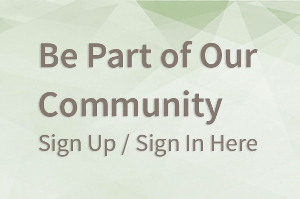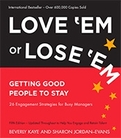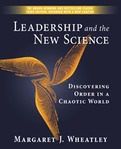BK Blog Post
The Nonprofit Industrial Complex and Chocolate Milk
 Posted by
Charlotte Ashlock,
Executive Editor,
Berrett-Koehler Publishers Inc.
Posted by
Charlotte Ashlock,
Executive Editor,
Berrett-Koehler Publishers Inc.
Charlotte Ashlock is a crazy idealist trying to make the world a better place!
"When someone knocks on my door with the intention of wanting to do good to me, I always think the wisest course of action is to attempt to climb out the window and escape."
-My Grandma Jinny
When I told my grandmother I wanted to pursue a career in the nonprofit sector, her reaction was surprisingly negative. In her opinion, professional do-gooders were not only nosy, meddlesome folk— they were dangerous forces to be reckoned with. Such people were so stubbornly certain they were right, there was no reasoning with them; any more than an enthusiastic hurricane can be reasoned into changing its course.
Now, instead of working for nonprofits, I help edit and publish books for professional do-gooders of all sorts. Today I want to talk about our author Michel Gelobter’s book: he applies the methods of Lean Startup to nonprofit organizations in his book, Lean Startups for Social Change. (If you’re not familiar with Lean Startup, the idea is that organizations should try lots of things, and learn from their mistakes).
Personally, I think building in mechanisms to ensure flexibility, is EVEN MORE vital for nonprofits. To do right, you must be open to the idea that you may be doing it wrong. And you need ways of getting feedback— a core principle of the Lean Startup is figuring out how customers react to what you have created.
Problem is: in the for-profit world, it’s very clear who your customers are; in the nonprofit world, it¹s so much more complicated. Gelobter identifies three customer types for nonprofits: direct targets (say, the kids you want to feed), indirect targets (say, the schools that distribute the food), and funders.
When Gelobter visited our office a few months back, I asked him, “What do you do about the problem, that you’re more accountable to your funders, than you are to your targets?” Pretty much every book attacking “the nonprofit industrial complex” (see The Revolution Will Not Be Funded) points at this core issue.
Gelobter responded that it’s up to the nonprofit leader to balance the needs of his three customer groups. You should experiment with different ways of accomplishing your goals, while simultaneously keeping your funders happy. It was a good answer, but I hadn’t asked my question well enough. What I should have asked was, “How do you give the direct targets ANY VOICE in the process at all? Because usually— they don¹t have one.”
What the heck do I mean by that? I’ve seen it first hand. When I worked as a teen mentor for Americorps, there was a children¹s nutrition charity who would deliver healthy snacks to our library twice a week. On a clipboard, we kept track of how many low-income children were fed snacks so that the charity could measure the “effectiveness” of their program.
But sometimes the numbers hide the real story. The charity delivered little cartons of milk, and every snack day, the head librarian would open the cartons of milk, pour them into a pitcher, and mix it with chocolate syrup. It was a lot of work opening all the little cartons, and I asked her why she bothered. She laughed and said, “If I don¹t mix it with chocolate syrup, they don’t drink it. And the waste just drives me crazy- I hate throwing those little cartons of milk away.”
Then one day a representative from the nutrition charity came to interview me about how the program was doing. I told her about our backroom chocolate syrup maneuvers and she frowned hard and said several times, “That’s very interesting!” Then I got in trouble with the head librarian for revealing our illicit activities. But I thought it was important for the charity to know they were giving us drinks the kids didn’t like.
Structurally, that nonprofit was set up so that the kids being fed had no way to share their opinions. The “indirect targets,” (in this case, the librarian and me) had a voice in the process. The funder had a voice in the process; I assume it¹s for the funder that we were tracking “kids fed,” on the clipboard. But for the kids (and it was supposedly all about the kids) there was no customer feedback mechanism.
I bet I can guess what you’re thinking, because it’s what I thought too at first. You’re thinking, “This is a nutrition charity, and chocolate syrup is very unhealthy. It doesn¹t matter what the kids think— chocolate syrup is not good for them.” You might even think the nonprofit¹s nutrition mission was being sabotaged.
So I’ve got a question: Would you put chocolate syrup in your own kid¹s milk?
If the answer is YES, then my question is-- what does it say about you, that you think your own child should have chocolate syrup in their milk, but you don’t think poor kids should get to have chocolate syrup in their milk?
Poor kids are KIDS. Like any kids, they want their food to be fun. Just because they¹re hungry and their parents are struggling, doesn’t mean they don’t care about their food being fun. To imagine them as needy people who should gratefully receive anything you offer— no matter what it is— is to imagine them as less than human.
When marketers target a customer, they do everything possible to imagine the customer as a full, real, human person. They conduct focus groups. They send surveys. They even write elaborate customer personas for internal use. They aim to please. It’s a very strange and rare individual, who thinks that way about pleasing the recipients of their charity.
It’s generally believed that recipients of charity “should” be grateful— no matter how clumsy or dysfunctional the charitable efforts might be. Given that basic assumption, how can charities get the information they need to make their services more effective? Will you feel comfortable offering feedback to someone who’s giving you charity? How can you even have the courage to voice that?
Charlotte Bronte in Jane Eyre, made a distinction between charity and kindness: charity comes from duty, and kindness comes from warmth. So I ask myself— how many well-intentioned philanthropic efforts are (perhaps accidentally) lacking in kindness and empathy for their direct targets? What good is kindness, even, when there is no free flow of information?
I’m so happy that Lean Startups for Social Change is being published, because I believe the discipline imposed by its methods will help connect nonprofits more closely to their direct targets and their needs. Have you had any experiences with nonprofits who were disconnected from their direct targets? What do you think is the best way for a nonprofit to stay connected to the needs of the people they are ultimately serving?





